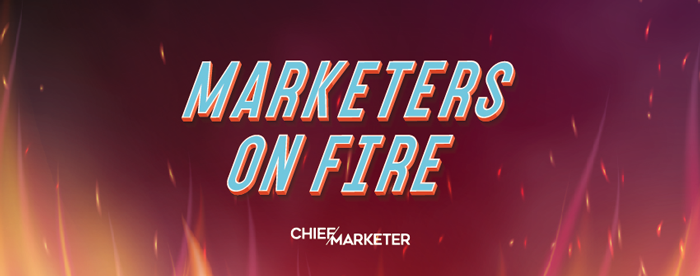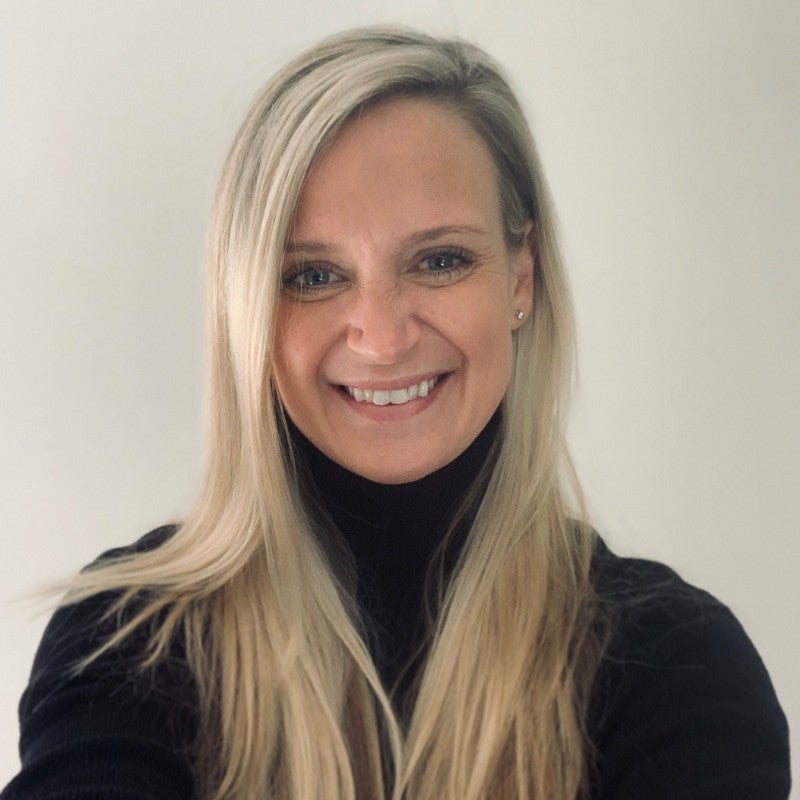
According to UScellular marketing chief Eric Jagher, going up against your direct competitors may not be the best way to break through. “Sometimes the right thing to do is challenge something bigger than the category,” he said. For Jagher, that meant spearheading the brand’s multi-phased “Let’s Find US” campaign earlier this year, which explores the relationship between consumers and technology by addressing the issue of cell phone overuse.
So, it encourages consumers not to use the service… sort of. “As we were looking at the research, one of the things that popped up, ironically, was that people are struggling with the relationship that they have with their devices,” Jagher told Chief Marketer. “They love the technology. The problem is when the technology gets out of place and it starts to dominate people’s lives. So, if we’re a carrier that’s going to connect people to what matters most, how can we help them to manage that relationship with technology in a better way?”
The campaign initially tapped AI technology during Super Bowl playoff games to detect approximately how many people in the stadiums were missing major plays while they were face-down in their phones. The next component included a “Phones Down for 5” pledge that encouraged people to put their devices down for five days, hours or even minutes, as well as messaging to help users control the technology by pausing notifications or phone calls.
It also included a partnership with nonprofit Screen Sanity, which guides parents and children on developing a better relationship with digital technology in general. And most recently, the brand launched a Smarter Start Toolkit to help parents facilitate a discussion about better managing the technology.
We spoke with Jagher—our Marketers on Fire pick this month—about the program’s origins, startling stats about cell phone usage in America, strategies for setting the brand apart within a hyper-competitive category and the campaign’s positive results surrounding brand consideration and Net Promoter Scores.

Chief Marketer: Why did you feel the need to create a campaign that’s about using your cell phone less?
Eric Jagher, CMO and SVP at UScellular: We are all about connecting people to what matters most. And obviously, cell phones would be a big part of that. As we were looking at research, one of the things that popped up, ironically, was that people are struggling with the relationship that they have with their devices. They love the technology. The problem is when the technology gets out of place and it starts to dominate people’s lives. And so if we’re a carrier that’s going to connect people to what matters most, how can we help people to manage that relationship with technology in a better way? That might mean putting the phone down sometimes, or setting the phone to limit distractions, notifications.
CM: In what ways does the brand facilitate that specifically?
EJ: It started with the Super Bowl. For the first campaign that we did, “Missing the Big Game,” we used AI during the Super Bowl to show people in the stadium so connected to that technology that they were missing big plays. Something like 16,000 fans missed touchdowns during the game, 6,000 fans were watching the phones or the halftime show by Rihanna, 4,000 people-plus missed the winning field goal. That was a way to create awareness.
The first important thing we did from a marketing perspective was, “Phones Down for Five.” I did it, our CEO did it. We had celebrities doing it, like Ashley Tisdale. Put your phone down for five days, hours, even five minutes, just to get a sense of what it feels like to put the phone aside. The second step was, how are we going to help you solve it? Ninety-five percent of people never change the default settings in their devices, but there’s a lot of great capabilities in those devices, including modes you can use to shut off things like notifications during certain hours of the day. So the second phase was to help people to control the technology, what we call “US mode,” which is using technology native to the device.
The next phase came in our Screen Sanity partnership, an international nonprofit focused on helping parents and kids have a better relationship with digital technology in general. Recently we’ve launched a Smarter Start Toolkit around back-to-school so parents can talk to kids about how to manage technology better, because it’s not a conversation that parents enjoy having. This is a way to help them facilitate that discussion.
CM: How did the AI work exactly?
EJ: We tested the AI over a few of the playoff games before the Super Bowl, the division rounds and the conference championships. We used a Microsoft AI to look around the stadium and catch people looking down into their phones. That’s how we were able to get those stats. When there was a big touchdown, we could then see how many people had their heads buried in their phones as opposed to watching the game.
CM: What other research stats informed the campaign?
EJ: The average person spends more than five hours a day staring at their phone. Most Americans reach for their device between three and 400 times a day. Forty-seven percent of Americans say they’re addicted to their phone. Parents say that the number one battleground with their kids is these devices, and how to get off them. A more humorous one, but still very serious: It’s the number two thing people give up for Lent after chocolate.
CM: What are your strategic marketing goals with the campaign, and how are you measuring its success?
EJ: First and foremost, we’re trying to drive reappraisal of the UScellular brand. In some markets in our footprint we’ve had a little bit of market share deterioration. So we want people to have another reason to look at our brand and say, I see them differently and I want to come back. Love for the brand is our number one goal. And then, getting people to take action off of seeing this. Through June, we have some really interesting stats: a third of UScellular customers say they’re aware of us promoting healthy relationships with technology, and 34 percent of those customers state it improved their opinion of us.
So we’re seeing some really nice lift with existing customers, and even non-customers who were aware of the campaign felt that it improved their opinion of us by 18 percent. We’ve had over 358 million brand impressions to date since the launch of the campaign. Over the last two months in a row now, our Net Promoter Score is number one in our footprint ahead of all the other big three carriers. And we’re really proud of that because that’s been something we’ve been working on for a while. A year ago we were last by a decent margin, and then in the last two months we’ve been first since we’ve launched this campaign.
CM: In general, what is your strategy when it comes to setting your brand apart from your main competitors?
EJ: Our competitors seem content to fight each other constantly about wireless. One of the key insights we had during the development of this was that we wanted to talk about something bigger than the category. How do we help people to connect better? Let’s not fight against each other. Let’s fight about the technology getting out of place. When we think about building brand value and loyalty, we want to focus on something customers care about. That’s where the shift came in. We’re focused on setting the brand apart by having a strong value proposition. We’re always going to have competitive promotional offers in the marketplace, but really building that brand around a strong value prop and competitive offers.
CM: What are your brand’s greatest challenges, and how are you tackling them from a marketing perspective?
EJ: This is a hyper-competitive industry. You can’t go a set of commercials, whether it’s streaming content or linear TV, where you’re not seeing a wireless commercial. So that makes it challenging in the sense that the pull is to always do a transactional or performance marketing spot that’s focused on the device you’re selling today, how much off, and what’s the price plan. We’re certainly always going to do our fair share of that. But my role as a CMO is to make sure we’re continuing to develop the brand, and make sure people understand what UScellular is all about and what we stand for. And that’s where developing this healthy relationship with technology is really important. And then all the offers and everything else sits below that. The pull is to use all of the media to focus on the transactional or the performance, but you have to keep some of the focus on the brand and the equity.
The other thing is, and it’s probably very obvious to most, is that we are—depending on the day—the fourth or fifth largest carrier. It’s a David-versus-Goliath-type situation. AT&T, Verizon and T-Mobile are always going to have a lot more to spend on advertising and media than we are. So we have to be nimble, to react. I’m very proud of my team and what we do in terms of how we structure hyper-local offers. Maybe it’s different in this state versus that state. The execution and the operational excellence of the team has to be top-notch, and it is. We’re constantly trying, testing different things to make sure we’re optimizing our offers in the marketplace.
CM: Lastly, in your view, what should modern marketers be focusing on to advance their careers?
EJ: Obviously the digital landscape has become more and more important over the years. A lot of marketers are figuring out how to address this notion of a cookie-less future. We’re certainly talking about it internally. My advice is to not lose focus on the quantitative aspects of marketing and how important financial analysis is to becoming a really strong marketer. It’s an important skillset, and the people I see who are most successful around me have that skillset set as well.
In marketing it’s easy to want to challenge the other person in your category. One thing we’ve learned in this process is that sometimes the right thing to do is challenge something bigger than the category. There are other great examples. Dove didn’t go challenge Irish Spring, or other soaps. They challenged this notion of toxic beauty. Chipotle doesn’t go against Taco Bell. They go challenge GMOs and freshness, and make that their stance. We’ve learned a lot through some of those examples: that sometimes the best thing to challenge is something bigger.




